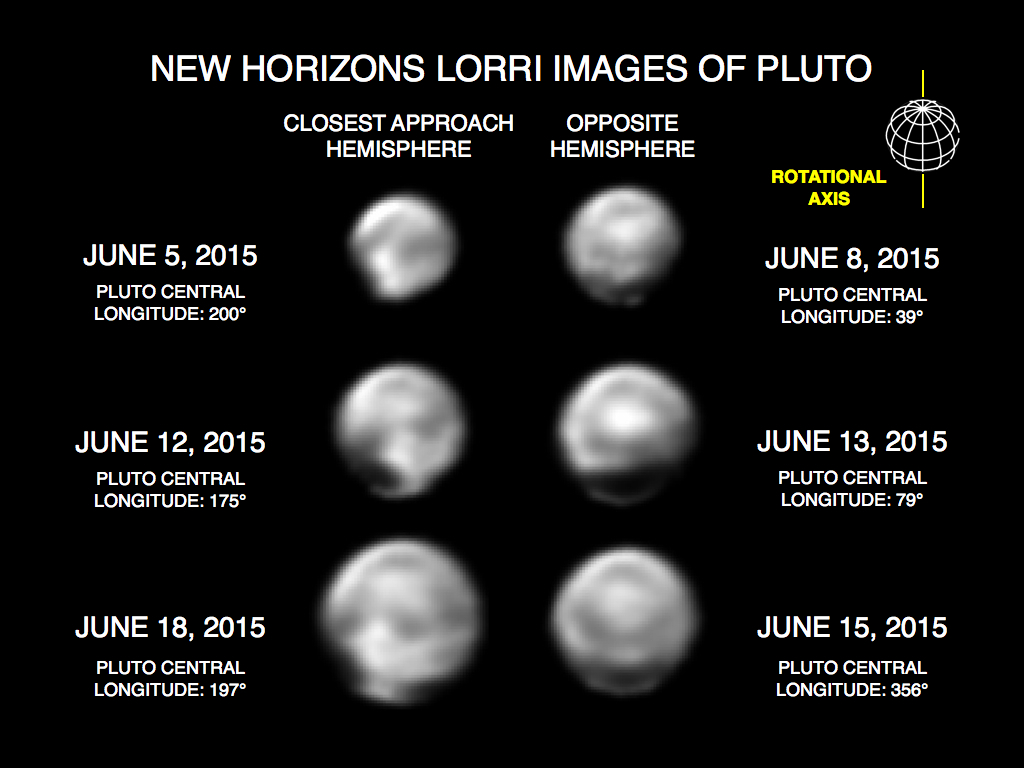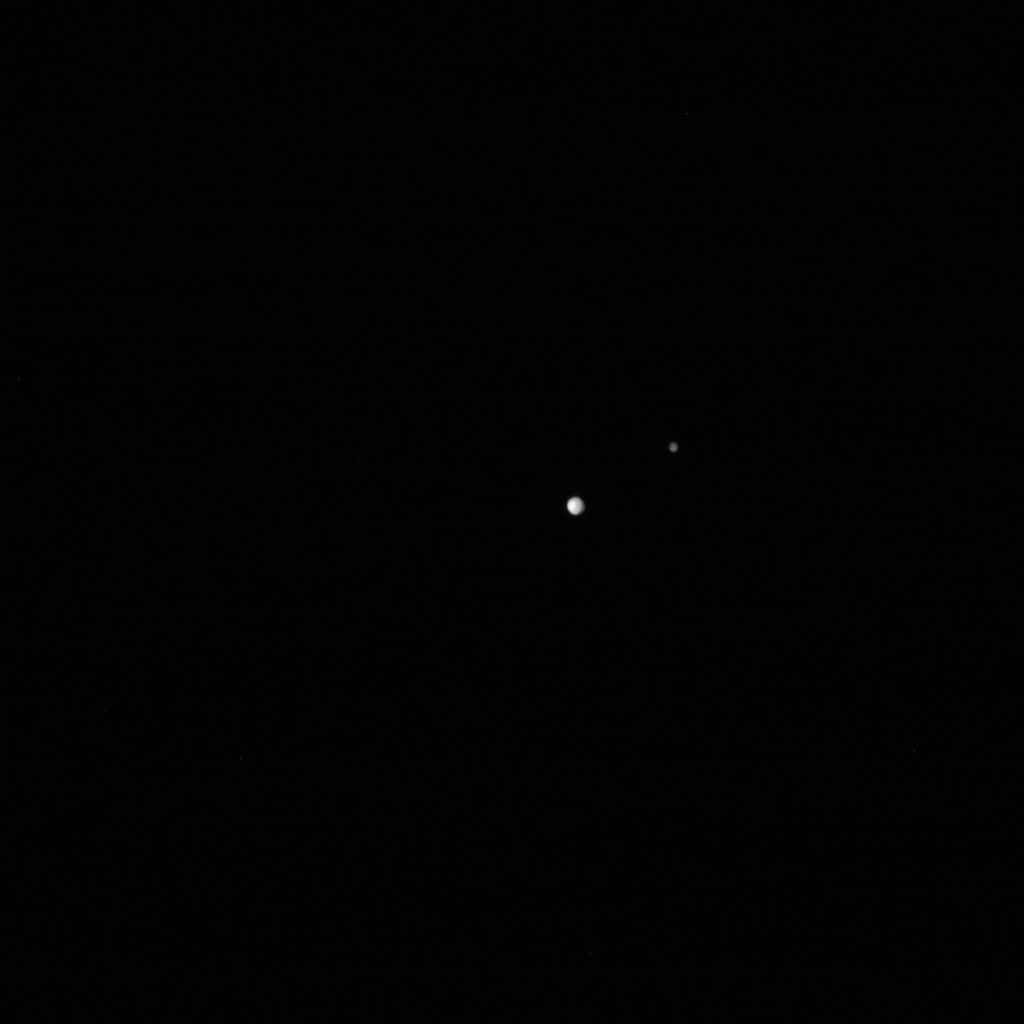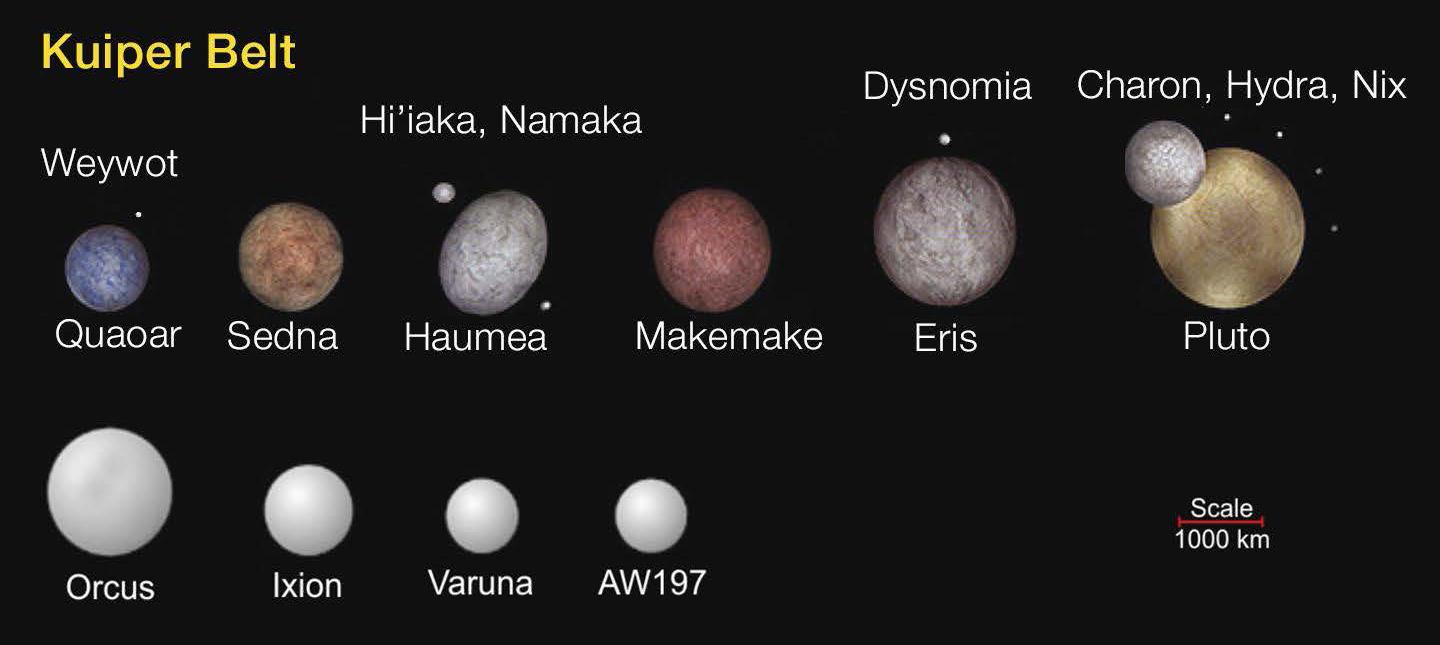The actual version http://spaceflightnow.com/2015/06/23/new-horizons-in-good-shape-approaching-pluto/

The cartoon send-up version.

The actual version http://spaceflightnow.com/2015/06/23/new-horizons-in-good-shape-approaching-pluto/

The cartoon send-up version.

They should have gone to Michael’ s camera shop and got themselves a decent lens.
And Charon. See http://www.nasa.gov/feature/new-from-nasas-new-horizons-increasing-variety-on-plutos-close-approach-hemisphere-and-a

Anyone interested in New Horizons at Pluto should also drop in on NASA TV every week or so. they repeat their New Horizons TV program fairly often.
——
Also, current copies of the latest raw images from LORRI can be found through http://pdssbn.astro.umd.edu/holdings/nh-x-lorri-2-plutocruise-v1.0/dataset.html
I clicked on browse, then data, then navigated to the most recent image (in fits format) and viewed it using the computer program “FITS Liberator”.
But all I could see was a couple of blurry dots for Pluto and Charon, the whole of Pluto bering only about 5 pixels wide.
Hold it, that’s not right, that was an image from July 2014, eleven months old. Where are the most recent raw images?
mollwollfumble said:
Anyone interested in New Horizons at Pluto should also drop in on NASA TV every week or so. they repeat their New Horizons TV program fairly often.——
Also, current copies of the latest raw images from LORRI can be found through http://pdssbn.astro.umd.edu/holdings/nh-x-lorri-2-plutocruise-v1.0/dataset.html
I clicked on browse, then data, then navigated to the most recent image (in fits format) and viewed it using the computer program “FITS Liberator”.
But all I could see was a couple of blurry dots for Pluto and Charon, the whole of Pluto bering only about 5 pixels wide.
Hold it, that’s not right, that was an image from July 2014, eleven months old. Where are the most recent raw images?
Ignore that link above, that’s way old. The latest raw Lorri images of Pluto and surrounds are on http://pluto.jhuapl.edu/soc/Pluto-Encounter/index.php
The latest images there as I type are from 23 Jun 2015. The images where Pluto and Charon are grossly overexposed (with tails) are for trying to find new satellites and space junk in the system. So far no new satellites have been found other than the five. The images of Pluto and Charon properly exposed are like this:

sibeen said:
They should have gone to Michael’ s camera shop and got themselves a decent lens.
Apparently, the problem is that they’re still trying to photographs from a distance of about one AU away, which is more difficult than trying to photograph the our Moon from a camera as far away from us as the Sun is.
Isn’t that over complicating it?
See also first image from Philae on 67P comet surface.
http://tokyo3.org/forums/holiday/?main=http%3A//tokyo3.org/forums/holiday/topics/6181/

So Pluto is almost properly spherical then, it’s big enough to have exceeded the potato mass
Dropbear said:
So Pluto is almost properly spherical then, it’s big enough to have exceeded the potato mass
Yep. Compare radii.
Moon 1737 km – rocky, spherical
Pluto 1184 km – icy, spherical
Charon 603 km – icy, spherical
Ceres 471 km – icy, spherical
Vesta 262 km – rocky, potato-shaped
Proteus 210 km – icy, largest known potato-shaped moon (of Neptune)
Mimas 198 km – icy, smallest known spherical moon.
So why is Mimas spherical and Vesta isn’t ?
mollwollfumble said:
Dropbear said:
So Pluto is almost properly spherical then, it’s big enough to have exceeded the potato mass
Yep. Compare radii.
Moon 1737 km – rocky, spherical
Pluto 1184 km – icy, spherical
Charon 603 km – icy, spherical
Ceres 471 km – icy, spherical
Vesta 262 km – rocky, potato-shaped
Proteus 210 km – icy, largest known potato-shaped moon (of Neptune)
Mimas 198 km – icy, smallest known spherical moon.
While on the same topic. Even at this late stage we only know the sizes of one of five of Pluto’s moons. Pluto’s second largest moon, Hydra, could have a radius anywhere between 30 and 84 km. The next smallest, Nix, is equally uncertain, with a radius anywhere between 23 and 64 km.
For comparison, the radius of comet McNaught is ~12.5 km and of Phobos is 11 km.
Dropbear said:
So why is Mimas spherical and Vesta isn’t ?
I think it’s because ice melts more easily than rock. Spherical objects are those that have at some time been molten all the way through.
Kuiper Belt Objects vary in reflectivity and colors. Pluto is very bright, with a reflectivity of 60%. Compare that with Ceres 6% (excluding bright dots) and Vesta 38%.

They’re drawing Eris smaller than Pluto now. When last I heard it was larger.
Two weeks out … shit gets real.
I’ll say this for Pluto, it’s clearly got some kind of … stuff … on it.

Wonder how much they’ve boosted the contrast though.
dv said:
Two weeks out … shit gets real.
Han old buddy don’t fail me now
Getting closer…
